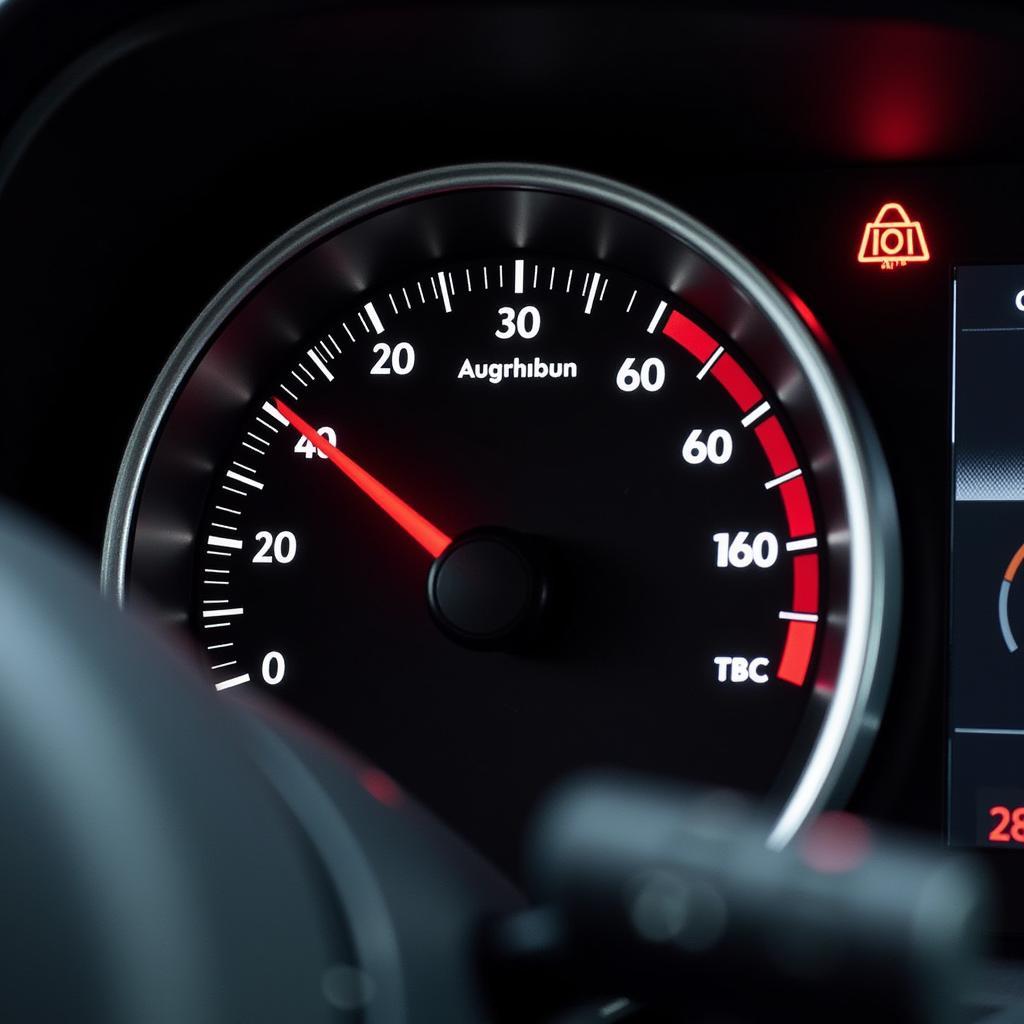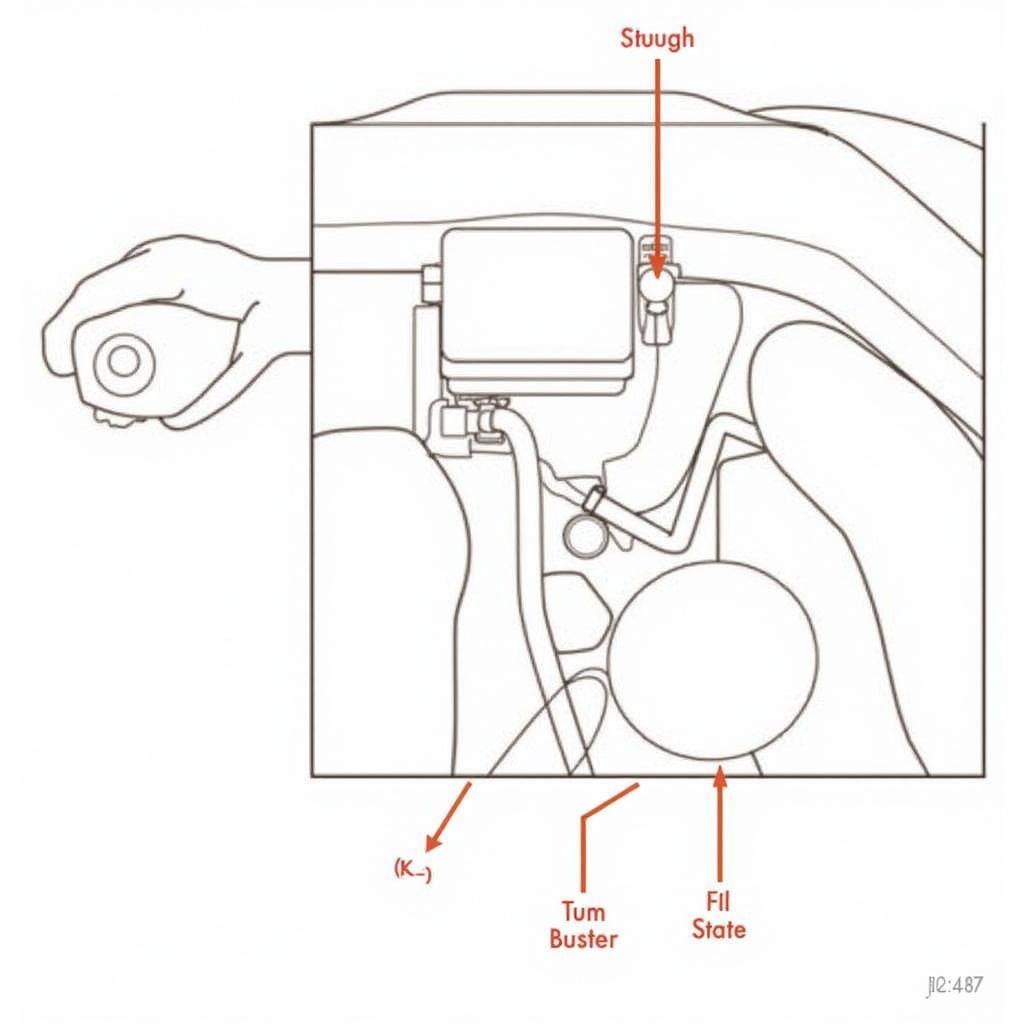Thermostat Problems Cars can lead to overheating, poor fuel economy, and even engine damage. Understanding how your car’s thermostat works, recognizing the symptoms of a faulty thermostat, and knowing how to diagnose and fix the issue are crucial for every car owner and mechanic. This guide will equip you with the knowledge you need to tackle thermostat problems head-on.
A car’s thermostat is a small but vital component that regulates the flow of coolant through the engine. It’s designed to maintain the engine’s optimal operating temperature, ensuring efficient combustion and preventing overheating. When functioning correctly, the thermostat opens and closes to allow coolant to circulate when the engine reaches a specific temperature. However, a malfunctioning thermostat can disrupt this process, causing a range of problems.
Common Symptoms of Thermostat Problems in Cars
Recognizing the symptoms of a failing thermostat is the first step towards resolving the issue. These symptoms can vary but often include:
- Overheating: This is the most obvious sign. If your car’s temperature gauge consistently reads high or the warning light illuminates, a stuck-closed thermostat could be the culprit. Overheating can cause severe engine damage, so address this immediately.
- Poor Fuel Economy: A malfunctioning thermostat can prevent the engine from reaching its optimal operating temperature, leading to reduced fuel efficiency.
- Fluctuating Temperature Gauge: If the temperature gauge swings erratically between normal and high readings, it could indicate a thermostat that’s sticking open or closed intermittently.
- Heater Not Working Properly: A stuck-closed thermostat restricts coolant flow, which can prevent the heater from producing sufficient heat.
- Coolant Leaks: While not always directly related to the thermostat itself, leaks around the thermostat housing can sometimes indicate a problem with the gasket or the housing itself.
 Car Thermostat Overheating Problems
Car Thermostat Overheating Problems
Similar to car problems on the road, a faulty thermostat can leave you stranded. So, let’s delve into how to diagnose these problems.
Diagnosing a Faulty Thermostat
Diagnosing a thermostat problem often involves a few simple checks:
- Visual Inspection: Check the coolant level and look for leaks around the thermostat housing.
- Radiator Hose Test: With the engine cold, start the car and carefully touch the upper radiator hose. If the thermostat is working correctly, the hose should remain cool until the engine reaches operating temperature. If the hose heats up quickly, the thermostat might be stuck open.
- Thermostat Removal and Testing: For a more definitive test, the thermostat can be removed and tested in a pot of boiling water. Observe whether it opens at the specified temperature. This requires some mechanical knowledge and tools.
 Testing Car Thermostat in Boiling Water
Testing Car Thermostat in Boiling Water
How to Fix Thermostat Problems in Cars
Once you’ve diagnosed a faulty thermostat, the solution is usually replacement. This is a relatively straightforward procedure for many vehicles, but it’s always best to consult your car’s repair manual for specific instructions.
- Replacing the Thermostat: This involves draining some coolant, removing the thermostat housing, replacing the thermostat and gasket, and refilling the coolant.
- Bleeding the Cooling System: After replacing the thermostat, it’s important to bleed the cooling system to remove any air pockets that could cause further problems.
Knowing the symptoms of engine problems in cars can help you identify a range of issues, including thermostat malfunctions.
Preventing Thermostat Problems
While thermostat failure is sometimes unavoidable, regular maintenance can help prolong its lifespan.
- Regular Coolant Flushes: Fresh coolant helps prevent corrosion and buildup that can damage the thermostat.
- Checking for Leaks: Regularly inspecting the cooling system for leaks can help identify potential problems early on.
For those struggling with mid engine car problems, understanding the cooling system, including the thermostat, is crucial for preventing overheating issues.
 Replacing Car Thermostat and Gasket
Replacing Car Thermostat and Gasket
Conclusion: Keeping Your Car Cool
Thermostat problems cars are a common issue, but with a little knowledge and preventative maintenance, you can keep your engine running smoothly. Understanding the symptoms, diagnosis, and repair process empowers you to address these problems effectively. If you’re unsure about any aspect of thermostat maintenance or repair, don’t hesitate to contact AutoTipPro at +1 (641) 206-8880 or visit our office at 500 N St Mary’s St, San Antonio, TX 78205, United States. We’re here to help keep your car running at its best.
Do you own a Porsche Cayman? Being aware of common porsche cayman car problems will help you maintain your vehicle effectively.
 Car Cooling System Diagram
Car Cooling System Diagram
If you are looking for places nearby to fix car overheating problems, remember that a properly functioning thermostat is essential for a healthy engine. Regular maintenance and prompt attention to any warning signs can save you from costly repairs down the road.




Leave a Reply